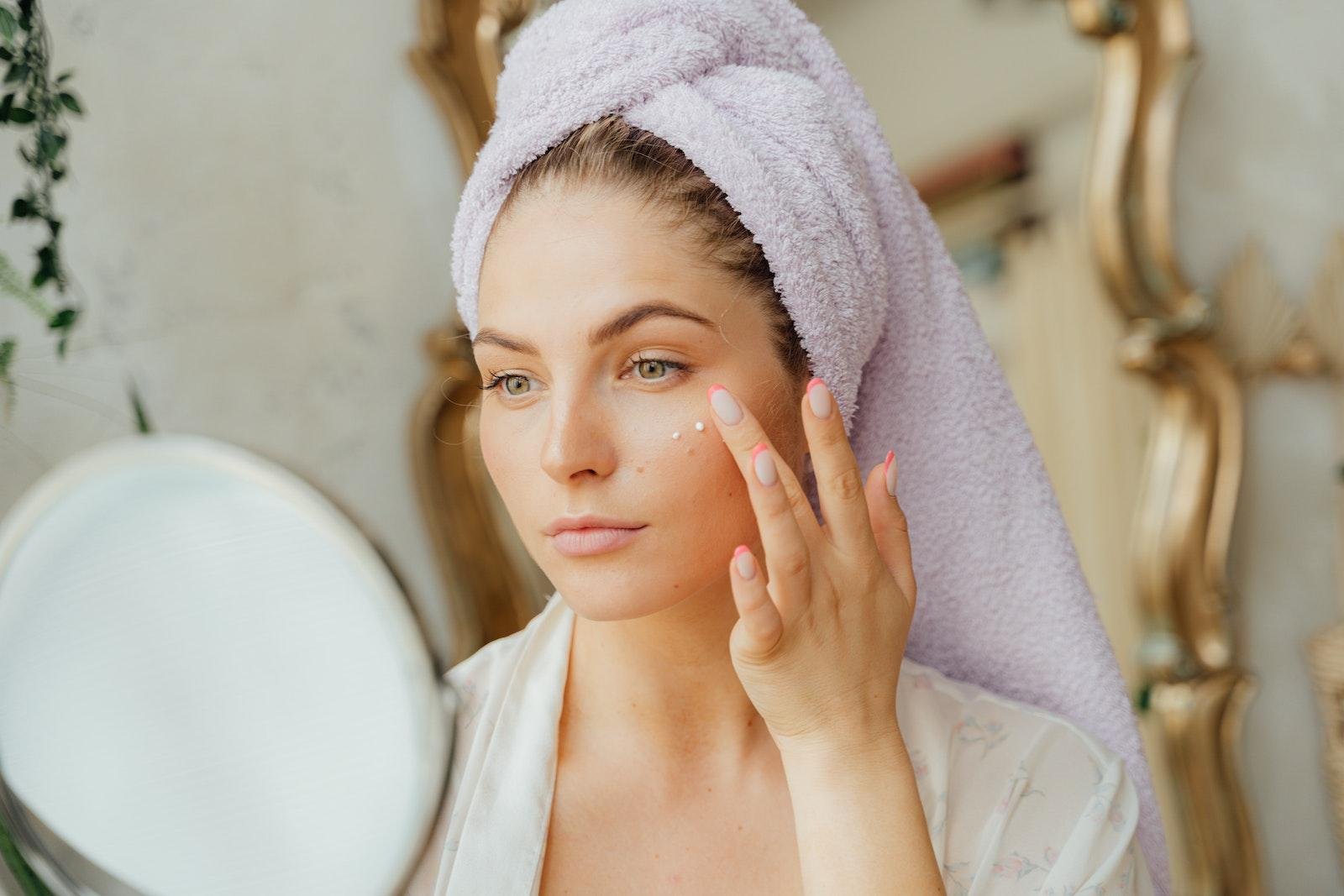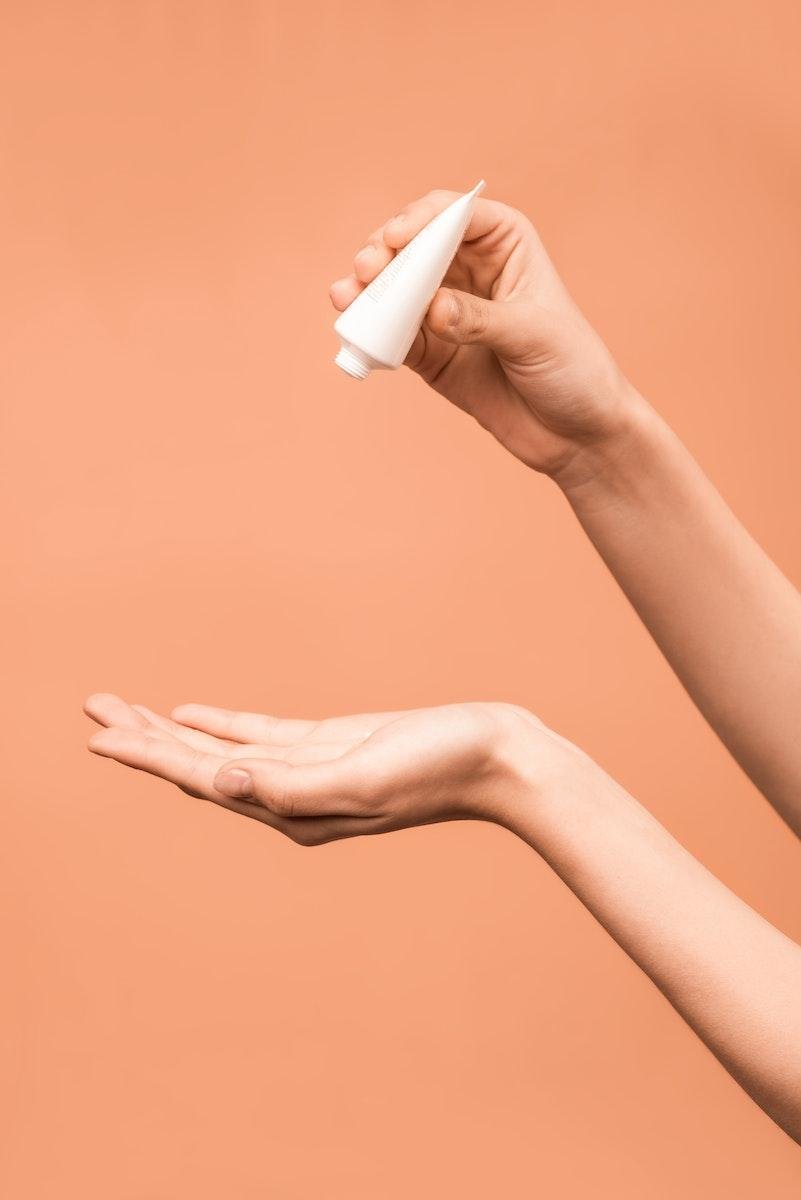Dry skin and dehydrated skin are two common skincare concerns that often get mistaken for each other. While they share similarities in terms of skin tightness and flakiness, understanding the fundamental differences between them is crucial for choosing the right skincare routine. By unraveling the nuances between these two conditions, you can better identify which one you might be experiencing and adopt effective strategies to restore your skin’s health and vitality.
What is the Difference Between Dry vs Dehydrated Skin?
Maintaining healthy skin is an essential part of our overall well-being. Our skin serves as a protective barrier, defending us against external aggressors and regulating our body temperature. However, various factors can disrupt the natural balance of our skin, leading to different skin conditions. Two common conditions that often cause confusion are dry skin and dehydrated skin.
Dry skin is a skin type characterized by the skin’s inability to retain sufficient moisture. It is often a result of underactive oil glands, leading to a lack of natural oils that keep the skin hydrated. Dry skin tends to feel rough, flaky, and tight, and it may be more prone to fine lines and irritation.
On the other hand, dehydrated skin is a temporary condition caused by a lack of water content in the skin. It can affect any skin type, including oily or combination skin. Dehydrated skin often appears dull, lacks elasticity, and may exhibit fine lines and increased sensitivity. Unlike dry skin, which is primarily influenced by oil production, dehydrated skin lacks water, leading to a compromised moisture balance.
Causes and Characteristics of Dry Skin
Dry skin is a skin type that is characterized by a lack of natural oils or lipids, which are essential for maintaining moisture in the skin. Individuals with dry skin often have underactive sebaceous glands, which are responsible for producing these oils. As a result, the skin’s ability to retain moisture is compromised, leading to dryness and a compromised skin barrier.
Common signs and symptoms of dry skin include:
- Rough and flaky texture: Dry skin tends to feel rough and may have a visibly flaky or scaly appearance, especially on the cheeks, elbows, and knees.
- Tightness and discomfort: Dry skin often feels tight, especially after washing or exposure to harsh weather conditions.
- Dullness: Dry skin lacks the natural radiance and healthy glow that well-hydrated skin possesses.
- Itching and irritation: Dry skin is more prone to itchiness, redness, and irritation, which can be exacerbated by environmental factors and certain skincare products.
Dry skin can have various causes, including:
- Environmental factors: Cold weather, low humidity levels, and excessive exposure to harsh elements like wind or sun can strip the skin of moisture, leading to dryness.
- Genetic predisposition: Some individuals are genetically predisposed to having dry skin. If your parents or close family members have dry skin, you may be more likely to experience it as well.
- Aging and hormonal changes: As we age, our skin undergoes natural changes, including a decrease in oil production. Hormonal fluctuations, such as those that occur during menopause, can also contribute to dryness.
Causes and Characteristics of Dehydrated Skin
Dehydrated skin is a condition that occurs when the skin lacks sufficient water content. Unlike dry skin, which is a skin type, dehydrated skin is a temporary condition that can affect anyone, including individuals with oily or combination skin. Dehydrated skin occurs when the skin’s water levels are imbalanced, leading to a compromised moisture barrier.
Common symptoms of dehydrated skin include:
- Dullness and lack of radiance: Dehydrated skin often appears lackluster and may lack the healthy glow associated with well-hydrated skin.
- Fine lines and increased sensitivity: Dehydration can exaggerate the appearance of fine lines and make the skin more prone to irritation and sensitivity.
- Tightness and discomfort: Dehydrated skin feels tight and may experience a sensation of discomfort, especially after cleansing or exposure to dry environments.
Dehydrated skin can also lead to an unexpected consequence: excess oil production. When the skin lacks hydration, it compensates by producing more oil, which can clog pores and lead to breakouts and acne. This paradoxical situation is often seen in individuals with oily or combination skin types. In an attempt to combat the oiliness, they may use harsh products meant to reduce oil production, but this only worsens the cycle of dehydrated, oily skin. To break this cycle, it’s important to address dehydration, restore proper hydration, and avoid harsh ingredients that can further strip the skin of moisture.
Dehydrated skin can be caused by a combination of external and internal factors, including:
- External factors: Excessive sun exposure, environmental conditions (such as low humidity, harsh weather, or changing seasons), and the use of harsh skincare products can strip the skin of moisture.
- Internal factors: Poor dietary habits, inadequate water intake, and certain medical conditions can impact the body’s hydration levels, ultimately affecting the skin.
 Moisture and Hydration with Dry vs. Dehydrated Skin
Moisture and Hydration with Dry vs. Dehydrated Skin
Understanding the difference between moisture and hydration is particularly important when it comes to skincare, especially for individuals with dry or dehydrated skin.
Hydration in skincare refers to the water content within the skin. It is the process of increasing and maintaining the water levels in the skin cells. Hydration is essential for keeping the skin plump, supple, and resilient.
Water-based products or those containing humectant ingredients, such as hyaluronic acid or glycerin, are commonly used to deliver hydration to the skin. These ingredients attract water from the environment or deeper layers of the skin and bind it to the skin’s surface, helping to increase its water content. Hydration plays a vital role in improving the skin’s elasticity, promoting a smooth and healthy appearance.
Hydrating ingredients include:
- Hyaluronic Acid: A powerful humectant that attracts and retains moisture, helping to plump and hydrate the skin.
- Glycerin: A humectant that draws moisture from the environment to the skin, providing hydration and improving the skin’s barrier function.
- Aloe Vera: Known for its soothing properties, aloe vera helps to hydrate the skin and reduce inflammation.
- Sodium PCA: A natural humectant that helps to bind moisture to the skin, keeping it hydrated and improving its elasticity.
- Sodium Hyaluronate: Similar to hyaluronic acid, it is a smaller molecule that can penetrate the skin more effectively, providing intense hydration.
- Panthenol (Provitamin B5): Helps to attract and retain moisture in the skin, promoting hydration and improving skin softness and elasticity.
- Honey: A natural humectant that helps to draw moisture to the skin, providing hydration and nourishment.
Moisture, on the other hand, refers to the presence of oils or lipids in the skin. It is responsible for nourishing the skin, balancing sebum production, and creating a protective barrier to prevent moisture loss. Moisturizing the skin involves using products that contain occlusive or emollient ingredients, such as oils, butters, or ceramides. These ingredients help to lock in moisture, keeping the skin hydrated by preventing water from evaporating from the skin’s surface. Moisturizers and creams are common skincare products used to provide moisture and reinforce the skin’s natural lipid barrier, resulting in improved skin texture and reduced dryness.
Moisturizing ingredients include:
- Jojoba Oil: A lightweight oil that mimics the skin’s natural sebum, providing moisture, nourishment, and balancing sebum production.
- Shea Butter: A rich butter that deeply moisturizes and protects the skin, helping to alleviate dryness and improve skin texture.
- Ceramides: Essential lipids that help to restore and strengthen the skin’s natural barrier, preventing moisture loss and promoting hydration.
- Squalane: A lightweight and skin-identical oil that helps to moisturize and soften the skin, improving its elasticity and smoothness.
- Argan Oil: A nourishing oil rich in essential fatty acids, antioxidants, and vitamins that deeply moisturizes and revitalizes the skin.
- Evening Primrose Oil: Helps to replenish and restore the skin’s moisture barrier, promoting hydration and improving skin texture.
- Shea Butter: A rich, emollient butter that provides deep hydration, soothing dry and irritated skin.
For individuals with dry or dehydrated skin, both hydration and moisture are crucial. Dry skin, as a skin type, lacks natural oils, leading to rough, flaky, and sometimes itchy skin. In this case, moisturizing products are particularly important to replenish the skin’s lipid barrier, nourish the skin, and prevent further water loss.
On the other hand, dehydrated skin is characterized by a temporary lack of water content, often caused by environmental factors or improper skincare habits. Hydrating products, such as humectant-rich serums or lightweight toners, can be effective in increasing water levels within the skin cells, improving the skin’s overall hydration.
Dry vs Dehydrated Skincare Routines
Skincare routines for dry skin and dehydrated skin share similarities, but there are crucial differences to consider.
When it comes to addressing dry skin, it’s vital to opt for richer moisturizers, facial oils, and serums containing ingredients like ceramides, squalane, and nourishing oils such as jojoba or argan.
On the other hand, if you’re struggling with dehydrated skin, it’s more beneficial to incorporate multiple lightweight products like toners, serums, and gel-cream moisturizers infused with hyaluronic acid, aloe vera, and glycerin.
However, it’s important to note that dry skin still requires hydration and should not overlook these lighter products with hydrating properties, while dehydrated skin still needs moisturizing products in addition to hydration.
Skincare Routine for Dry Skin
A good skincare routine for dry skin should focus on hydrating and nourishing the skin while reinforcing the skin’s natural barrier.
Here’s a suggested skincare routine for dry skin:
- Cleanser: Start your routine with a gentle, hydrating cleanser. Look for a cream cleanser or non-foaming face wash that won’t strip away the skin’s natural oils. Gently massage it onto damp skin and rinse with lukewarm water. Avoid hot water, as it can further dry the skin.
- Toner: Follow up with a hydrating toner to balance the skin’s pH levels and prepare it for better absorption of subsequent products. Look for toners that are alcohol-free and contain hydrating ingredients like hyaluronic acid or rose water.
- Serum: Incorporate a hydrating serum that is rich in humectants like hyaluronic acid or glycerin. These serums can deeply penetrate the skin and provide a boost of hydration. Apply a few drops onto your fingertips and gently pat it into your skin.
- Moisturizer: Use a rich, emollient moisturizer that is specifically formulated for dry skin. Look for moisturizers that contain nourishing ingredients like ceramides, shea butter, or natural oils such as jojoba oil or argan oil. Apply a generous amount to your face and neck, gently massaging it into the skin using upward motions.
- Eye Cream: Don’t forget to include a hydrating eye cream to address the delicate skin around the eyes. Look for eye creams that are formulated with ingredients like hyaluronic acid or peptides to hydrate, plump, and minimize fine lines. Gently tap a small amount of eye cream around the orbital bone using your ring finger.
- Sunscreen (morning routine): Protect your skin from harmful UV rays by applying a broad-spectrum sunscreen with at least SPF 30. Look for sunscreens that are also moisturizing to provide an additional layer of hydration. Apply it as the last step of your morning skincare routine, and reapply throughout the day if needed.
How to Treat Dehydrated Skin
To treat dehydrated skin, it’s important to focus on restoring and maintaining optimal hydration levels.
Here’s a suggested skincare routine to help address dehydrated skin:
- Cleanser: Start your routine with a gentle, hydrating cleanser. Look for a non-stripping, pH-balanced cleanser that cleanses without disrupting the skin’s moisture barrier. Gently massage it onto damp skin and rinse with lukewarm water.
- Hydrating Toner: Follow up with a hydrating toner to replenish moisture and rebalance the skin’s pH levels. Look for toners that contain hydrating ingredients like hyaluronic acid, glycerin, or botanical extracts. Apply it using a cotton pad or by gently patting it into the skin with your hands. Try adding multiple light layers for deeper hydration with the Korean 7-Skin Method.
- Hyaluronic Acid Serum: Incorporate a hyaluronic acid serum into your routine. Hyaluronic acid is a powerful humectant that attracts and retains moisture in the skin. Apply a few drops onto your fingertips and gently press it into your skin. Follow the instructions on the product for best results.
- Lightweight Moisturizer or Gel Cream: Choose a lightweight, non-greasy moisturizer or water-based gel cream that provides hydration without heaviness. Look for moisturizers that contain ingredients like hyaluronic acid, aloe vera, or soothing botanical extracts. Apply a sufficient amount to your face and neck, gently massaging it using upward motions.
- Facial Oil (optional): If your skin still needs an extra boost of moisture, consider incorporating a facial oil into your routine. Opt for lightweight oils like squalane or rosehip oil that won’t feel heavy on the skin. Apply a few drops and gently press it into the skin after your moisturizer.
- Eye Cream: Don’t forget to apply a hydrating eye cream specifically formulated for the delicate eye area. Look for ingredients like hyaluronic acid or peptides to provide moisture and minimize fine lines. Gently tap a small amount of eye cream around the orbital bone using your ring finger.
- Sunscreen (morning routine): Protect your skin from harmful UV rays by applying a broad-spectrum sunscreen with at least SPF 30. Look for sunscreens that are also hydrating to provide an additional layer of moisture and protection. Apply it as the last step of your morning skincare routine and reapply throughout the day if needed.




